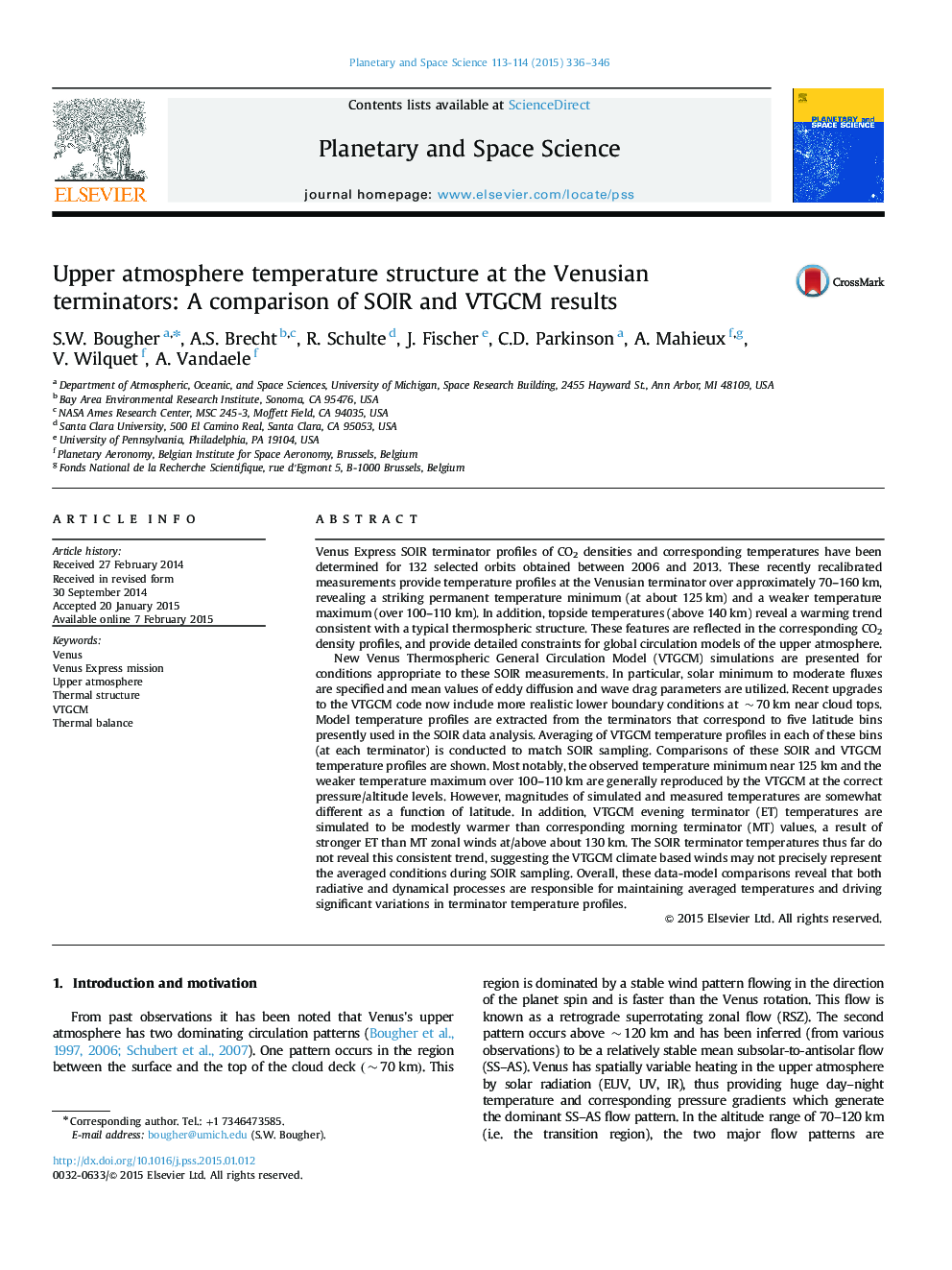| Article ID | Journal | Published Year | Pages | File Type |
|---|---|---|---|---|
| 8143285 | Planetary and Space Science | 2015 | 11 Pages |
Abstract
New Venus Thermospheric General Circulation Model (VTGCM) simulations are presented for conditions appropriate to these SOIR measurements. In particular, solar minimum to moderate fluxes are specified and mean values of eddy diffusion and wave drag parameters are utilized. Recent upgrades to the VTGCM code now include more realistic lower boundary conditions at ~70km near cloud tops. Model temperature profiles are extracted from the terminators that correspond to five latitude bins presently used in the SOIR data analysis. Averaging of VTGCM temperature profiles in each of these bins (at each terminator) is conducted to match SOIR sampling. Comparisons of these SOIR and VTGCM temperature profiles are shown. Most notably, the observed temperature minimum near 125Â km and the weaker temperature maximum over 100-110Â km are generally reproduced by the VTGCM at the correct pressure/altitude levels. However, magnitudes of simulated and measured temperatures are somewhat different as a function of latitude. In addition, VTGCM evening terminator (ET) temperatures are simulated to be modestly warmer than corresponding morning terminator (MT) values, a result of stronger ET than MT zonal winds at/above about 130Â km. The SOIR terminator temperatures thus far do not reveal this consistent trend, suggesting the VTGCM climate based winds may not precisely represent the averaged conditions during SOIR sampling. Overall, these data-model comparisons reveal that both radiative and dynamical processes are responsible for maintaining averaged temperatures and driving significant variations in terminator temperature profiles.
Related Topics
Physical Sciences and Engineering
Earth and Planetary Sciences
Geophysics
Authors
S.W. Bougher, A.S. Brecht, R. Schulte, J. Fischer, C.D. Parkinson, A. Mahieux, V. Wilquet, A. Vandaele,
